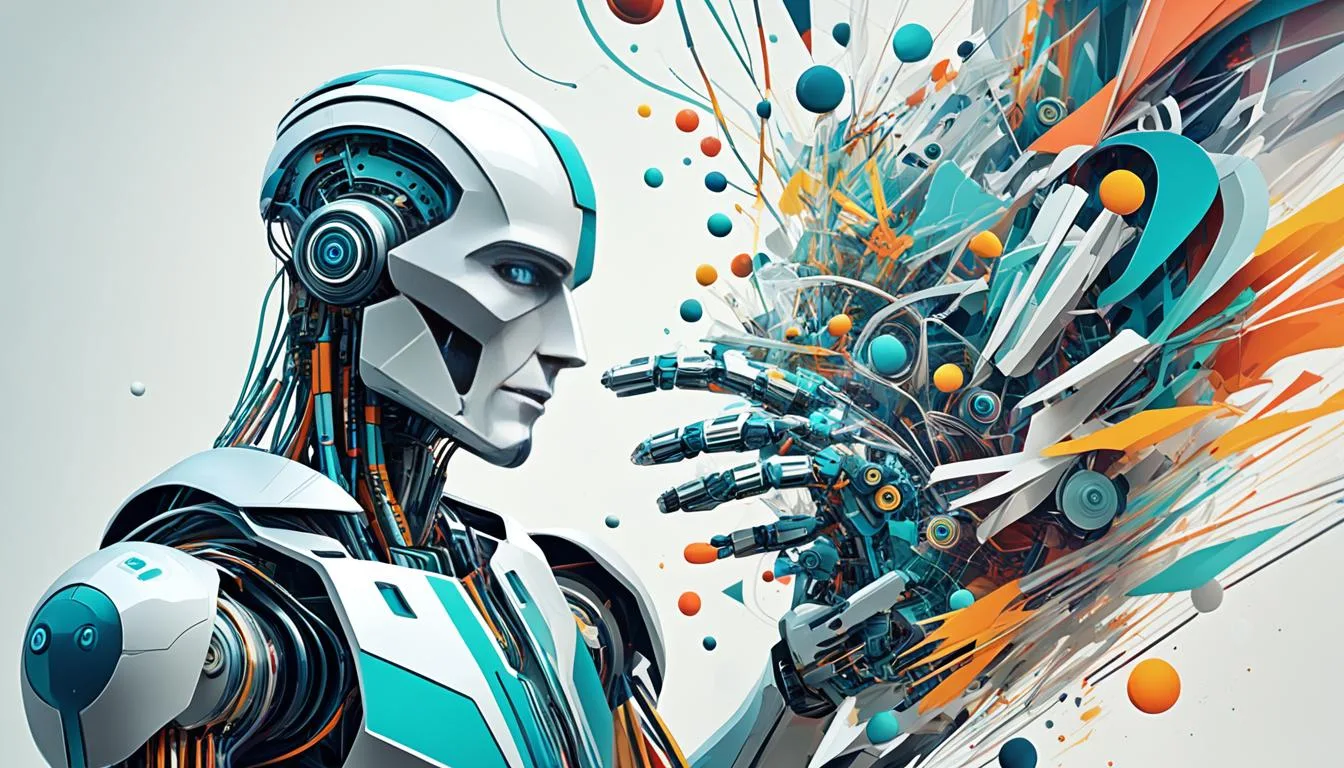
AI-Generated Art Explained: Techniques and Iconic Works
Art and technology have long been intertwined, pushing the boundaries of human creativity. But what happens when artificial intelligence enters the picture? Can AI truly create art that resonates with our emotions and challenges our understanding of creativity? In this article, I will take you on a journey into the captivating world of AI-generated art, where algorithms and neural networks become the brushes and canvases of the digital age.
Discover the techniques behind AI-generated art and explore some of its most iconic works. From mesmerizing paintings to thought-provoking sculptures, AI is leaving its indelible mark on the art world. But how does it work? How do AI algorithms learn to create art? And what does it mean for the future of artistic expression?
Join me as we unravel the mysteries of AI-generated art and delve into its fascinating possibilities. Prepare to be amazed, inspired, and challenged as we question the conventional wisdom surrounding creativity, opening our minds to the endless possibilities that AI brings to the world of art.
Contents
- 1 The Rise of AI-Generated Art in Popular Culture
- 2 Defining AI-Generated Art and Its Varieties
- 3 How AI Image Generation Technologies Transform Art
- 4 The Technical Intricacies of AI Art Generation
- 5 An Insider’s Guide: Using Midjourney to Create Art with AI
- 6 Real-Time Creation with DALL-E: Pushing the Boundaries of AI Art
- 7 Unveiling Adobe Firefly: A New Dimension in AI-Generated Art
- 8 Evaluating the Artistic Merit of AI-Created Works
- 9 AI-Generated Art In A Legal and Ethical Context
- 10 An Overview of Iconic AI-Generated Artworks
- 11 Conclusion
- 12 Source Links
Key Takeaways:
- AI-generated art combines artificial intelligence and creativity to produce compelling and thought-provoking artworks.
- Techniques such as image generation and text-to-image synthesis enable AI to create visually stunning pieces.
- Iconic AI-generated artworks challenge traditional notions of creativity and blur the line between human and machine.
- The rise of AI art generators and platforms provides artists with new tools and possibilities for artistic expression.
- Legal, ethical, and artistic considerations surrounding AI-generated art continue to evolve and require ongoing examination.
The Rise of AI-Generated Art in Popular Culture
AI-generated art has gained significant traction in popular culture in recent years. With the advent of AI art generators, this fascinating form of digital creativity has become more accessible and widely appreciated by art enthusiasts and novices alike. In this section, we will explore the rise of AI-generated art in popular culture and delve into the fascinating world of AI art generators.
Understanding AI Art Generators
AI art generators are tools powered by sophisticated algorithms that utilize large language models, such as GPT-3, to create unique and visually appealing artworks. These generators rely on machine learning techniques to analyze vast amounts of data and learn patterns, styles, and artistic concepts. By leveraging these AI models, artists and creators can generate art that is both surprising and innovative, expanding the boundaries of traditional forms of artistic expression.
AI art generators provide a platform for artists to explore new artistic directions and experiment with unconventional ideas. They offer endless possibilities for creating art that pushes the boundaries of human imagination and creativity. Through the use of AI algorithms, artists can collaborate with machines to produce visually stunning and thought-provoking artworks.
From Confused Bears to Walter White: The Quirky Creations of AI
One exciting aspect of AI-generated art is the myriad of quirky and unexpected creations it produces. AI algorithms have been known to generate whimsical and often absurd artworks, such as confused bears wearing hats or surreal interpretations of familiar objects. These quirky creations demonstrate the playful and unconventional nature of AI-generated art, capturing the imagination and curiosity of both viewers and artists.
AI has also ventured into the realm of popular culture, where it has created its own interpretations of iconic characters. From a unique AI take on Walter White from the acclaimed TV series “Breaking Bad” to AI-generated renditions of beloved characters from books, movies, and video games, AI art offers a fresh and unique perspective that captivates audiences and sparks new conversations.
The Impact of Large Language Models on Digital Creativity
Large language models, like GPT-3, have had a profound impact on digital creativity and have further propelled the growth of AI-generated art. These models possess a remarkable ability to understand and generate human-like text, which has facilitated the creation of more contextually rich and meaningful artworks. By combining the power of large language models with visual generation techniques, AI artists can create art that seamlessly integrates both text and visuals, fostering a deeper and more immersive creative experience.
The integration of large language models into AI art generators has expanded the possibilities for expression and transformed the way artists approach their work. It allows for the exploration of complex themes, narratives, and emotions, enabling artists to convey their ideas more effectively through their creations. The interplay between language and visual elements in AI-generated art has given rise to a new form of storytelling that challenges traditional artistic conventions and captivates audiences in novel and exciting ways.
Defining AI-Generated Art and Its Varieties
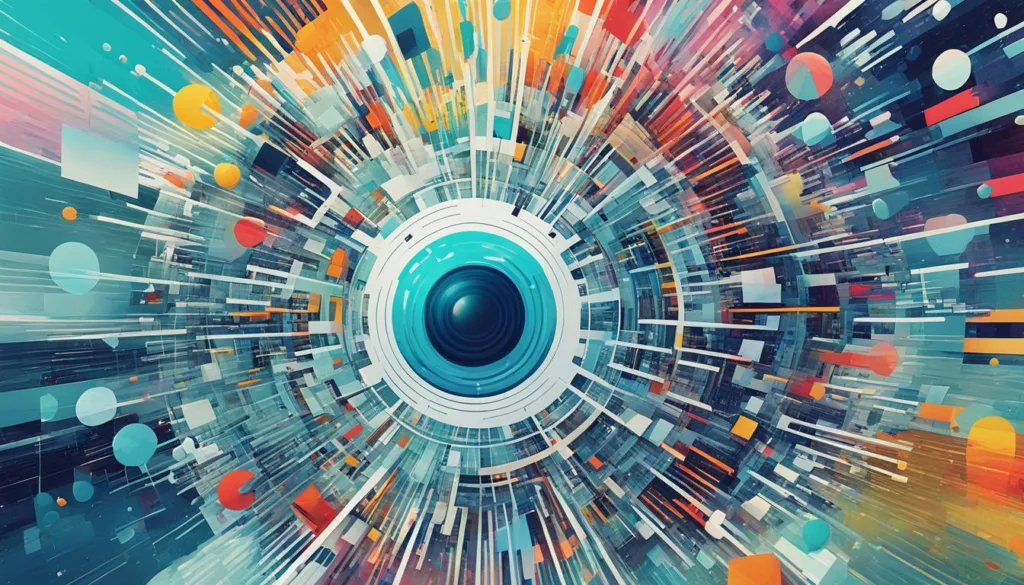
AI-generated art is a unique fusion of artificial intelligence and creative expression. It encompasses a wide range of digital artworks produced by generative AI tools. Let’s explore the different forms and varieties of AI-generated art.
1. Images: AI algorithms can generate stunning and realistic images, ranging from landscapes to abstract compositions. These AI-generated images are often indistinguishable from those created by human artists.
2. Text: AI can generate written content, including prose, poetry, and even news articles. These AI-generated texts can be coherent, informative, and tailored to specific topics or styles.
3. Videos: AI algorithms can create video content by seamlessly blending and synthesizing existing footage or images. This enables the creation of unique and visually appealing videos, such as deepfake technology.
4. Audio: AI has the ability to generate musical compositions and soundscapes. These AI-generated audios can range from classical symphonies to experimental sound art, challenging traditional notions of music creation.
5. Other digital artworks: AI can also generate other forms of digital art, such as interactive installations, virtual reality experiences, and even 3D sculptures. These AI-generated artworks push the boundaries of creativity and redefine the possibilities of digital expression.
“AI-generated art encompasses a wide range of digital artworks, including images, text, videos, audio, and other innovative forms of expression. The variety of AI-generated art is only limited by the boundaries of human imagination and the capabilities of AI algorithms.”
How AI Image Generation Technologies Transform Art
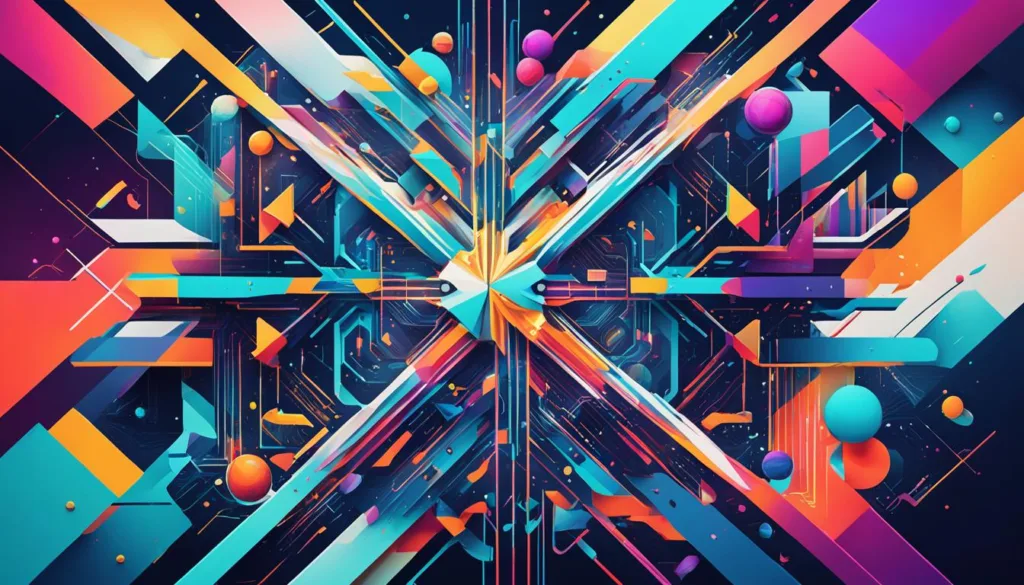
AI image generation technologies have revolutionized the art world, empowering artists to create stunning visuals using advanced AI algorithms. These technologies have opened up new possibilities for artistic expression and have transformed the way art is created.
The Mechanics Behind Text-to-Image AI Tools
Text-to-image AI tools play a crucial role in the process of transforming written prompts into visual representations. These powerful tools utilize deep learning algorithms to analyze textual inputs and generate corresponding images. By understanding the context and semantic meaning of the text, AI models can generate images that align with the given prompts.
For example, an artist can provide a textual description of a landscape, and the AI model will generate an image that accurately depicts the described scene. This process involves the neural network of the AI model learning from vast amounts of training data, capturing patterns and features that allow it to generate high-quality images.
Annotating Data Sets: Teaching AI to Distinguish Visual Components
Another critical aspect of AI image generation is the annotation of data sets. By annotating visual components in data sets, AI systems can learn to distinguish and generate specific elements in the generated images with greater accuracy.
Annotating data sets involves labeling images with detailed descriptions that identify different visual components, such as objects, colors, shapes, and textures. AI models are then trained on these annotated data sets, allowing them to learn the characteristics and relationships between different visual components.
As a result, AI image generation technologies can generate more realistic and diverse images, capturing intricate details and nuances in visuals. This annotation process enables AI models to understand the contextual significance of visual components, leading to the creation of visually compelling and meaningful artworks.
Summary of AI Image Generation Technologies
| AI Image Generation Technologies | Key Features |
|---|---|
| Text-to-Image AI Tools | – Converts written prompts into visual representations – Utilizes deep learning algorithms to analyze textual inputs – Generates images aligned with given prompts |
| Annotating Data Sets | – Labels images with descriptions of visual components – Trains AI models to distinguish and generate specific elements – Enhances realism and diversity in generated images |
Through the mechanics of text-to-image AI tools and the process of annotating data sets, AI image generation technologies have revolutionized the art world. These advancements have empowered artists, enabling them to create visually stunning and conceptually rich artworks that push the boundaries of creativity.
The Technical Intricacies of AI Art Generation

AI art generation involves complex technical processes and algorithms. To create AI-generated art, we rely on sophisticated AI algorithms and machine learning techniques. These technologies enable AI models to learn from large data sets and generate new art based on learned patterns and styles.
AI algorithms form the backbone of AI art generation. These algorithms are designed to process and analyze vast amounts of data, allowing AI models to understand and interpret artistic elements. By studying existing artworks, AI algorithms learn to recognize different styles, colors, compositions, and other visual elements that contribute to creating art.
Machine learning techniques are instrumental in training AI models for art generation. These techniques involve feeding AI models with extensive data sets, such as images, paintings, and sketches. The AI models then analyze and learn from this data to identify patterns and relationships between various artistic elements.
Once trained, AI models can generate new art by combining and reinterpreting the learned patterns and styles. They can produce unique and visually captivating artwork that often surprises and challenges traditional notions of creativity.
“Artificial intelligence will not replace artists, but artists who use artificial intelligence will replace those who do not.” – Gokul Solai, AI artist
Understanding the technical intricacies behind AI art generation is essential for appreciating the capabilities and limitations of AI-generated art. By harnessing the power of AI algorithms and machine learning techniques, artists and designers can explore new frontiers in creativity and push the boundaries of artistic expression.
An Insider’s Guide: Using Midjourney to Create Art with AI
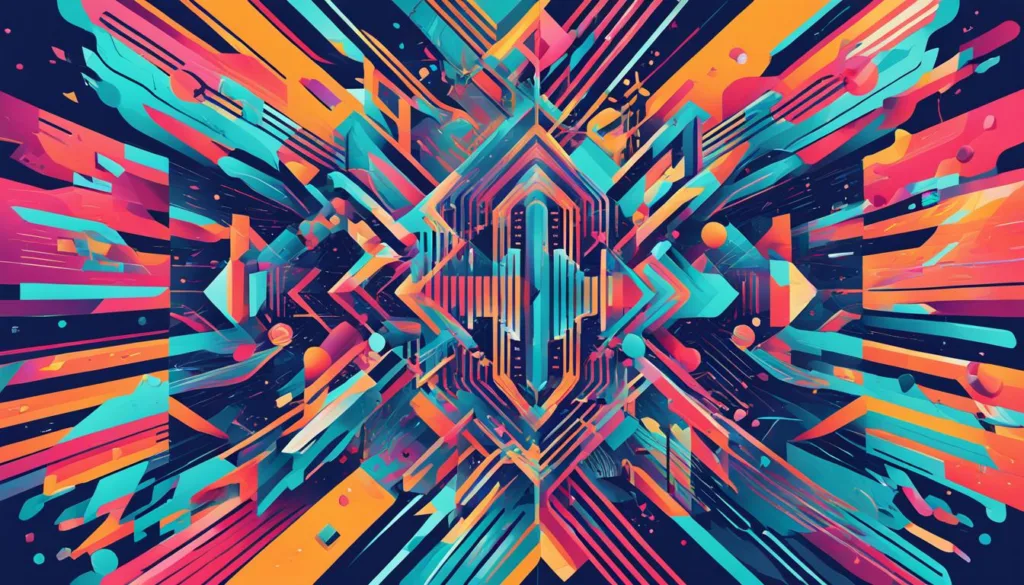
When it comes to creating art with AI, Midjourney is a renowned AI art platform that stands out for its user-friendly experience and impressive art generation capabilities. In this section, I will provide you with an insider’s guide on how to use Midjourney to create stunning artworks with AI.
Step 1: Getting Started
The first step is to visit the Midjourney website and sign up for an account. Once you’ve created your account, you’ll have access to a range of powerful AI tools and features.
Step 2: Exploring the Image Generator
One of the key features of Midjourney is its image generator. With this tool, you can transform your ideas and concepts into beautiful AI-generated artwork. To begin, simply select the image generator option from the menu.
Step 3: Customizing Your Artwork
Midjourney offers a wide range of customization options to bring your artistic vision to life. You can experiment with various parameters such as color palette, style, subject matter, and more. Feel free to play around with these options to create the perfect piece of AI-generated art.
Step 4: Refining Your Artwork
Once you’ve generated an initial artwork, Midjourney provides tools to refine and enhance it further. You can adjust details, add textures, or even combine multiple generated images to create unique and captivating compositions.
Step 5: Saving and Sharing Your Artwork
After you’ve finalized your artwork, you can save it directly from the Midjourney platform. You’ll have the option to download it as an image file, ready to be printed or shared digitally. Additionally, Midjourney provides a gallery feature where you can showcase your creations and connect with other artists in the community.
With Midjourney’s intuitive interface and powerful AI capabilities, anyone can embark on a creative journey and explore the world of AI-generated art. Through experimentation and artistic exploration, you can unleash your imagination and create captivating artworks that push the boundaries of artistic expression.
Real-Time Creation with DALL-E: Pushing the Boundaries of AI Art

DALL-E, developed by OpenAI, has garnered widespread acclaim for its remarkable ability to produce highly realistic and visually striking images. In this section, we will explore the real-time creation process with DALL-E, and delve into its impressive capabilities in visual alchemy. Additionally, we will provide valuable insights into crafting prompts that effectively elicit the desired AI-generated images from DALL-E.
Striking Realism and Simplicity: DALL-E’s Visual Alchemy
When it comes to producing AI-generated art, DALL-E excels in delivering images that possess a remarkable level of realism and simplicity. Its advanced algorithms and deep learning techniques enable DALL-E to create visuals that can often be mistaken for images produced by human artists. The combination of striking realism and simplicity in DALL-E’s outputs showcases the incredible potential of AI art in capturing the essence of various subjects and concepts.
From Imagination to Visualization: Crafting Prompts for DALL-E
Crafting effective prompts is a crucial step in harnessing the creative power of DALL-E. By providing clear and concise instructions, artists and creators can guide DALL-E towards generating images that align with their vision. Crafting prompts involves conveying desired attributes, concepts, or subjects in a way that allows DALL-E to transform imagination into stunning visualizations. Successful prompt crafting combines artistic intuition with an understanding of DALL-E’s capabilities, resulting in the creation of visually captivating and thought-provoking AI-generated artworks.
| Prompt | Generated Image |
|---|---|
| Abstract inkblot on a midnight sky | Image of an inkblot resembling a celestial masterpiece against a dark, starry backdrop |
| Whimsical unicorn galloping through a dreamy forest | Image of a whimsical unicorn running gracefully in a mystical forest, filled with vibrant colors and enchanting creatures |
| Minimalist silhouette of a city skyline at sunset | Image of a simplified city skyline with clean lines and dramatic colors, capturing the beauty of a sunset |
Unveiling Adobe Firefly: A New Dimension in AI-Generated Art
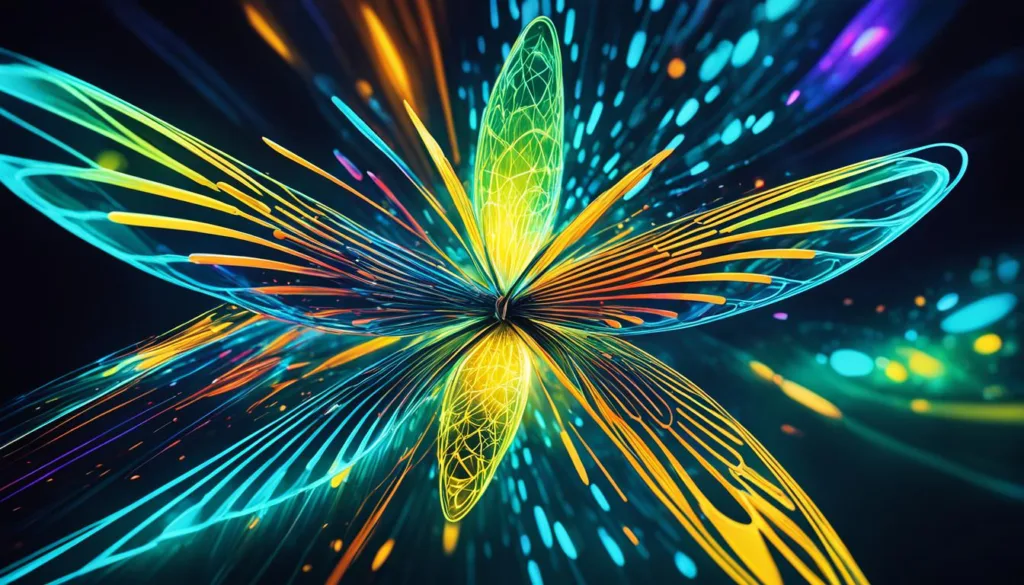
Introducing Adobe Firefly, the groundbreaking AI-powered platform that takes AI-generated art to a whole new level. With its unique features and capabilities, Firefly opens up a new dimension of creativity for artists and enthusiasts alike. Let’s dive into the exciting world of Adobe Firefly and explore how it enhances the art-making process.
Adobe Firefly brings together the power of AI and artistic expression, allowing artists to unleash their creativity and create stunning AI-generated artworks. With Firefly, you can explore new techniques, experiment with different styles, and push the boundaries of what is possible in the realm of digital art.
“Adobe Firefly is a game-changer for artists seeking innovative ways to create art. With its advanced AI capabilities and user-friendly interface, Firefly offers a seamless and efficient workflow that amplifies the artist’s vision.”
One of the key highlights of Adobe Firefly is its seamless integration with other Adobe creative tools. This integration enables artists to effortlessly incorporate AI-generated elements into their existing workflows, enhancing their artistic process and enabling them to create truly captivating and unique artworks.
Whether you are a professional artist, a hobbyist, or simply someone interested in exploring the limitless possibilities of AI-generated art, Adobe Firefly provides an intuitive and user-friendly platform to bring your artistic vision to life.
“Adobe Firefly revolutionizes the way artists create, pushing the boundaries of AI-generated art and empowering artists to explore new frontiers of creativity. It’s an incredible tool that opens up a whole new world of possibilities.”
Adobe Firefly Features and Capabilities
| Feature | Description |
|---|---|
| Advanced AI Algorithms | Firefly utilizes state-of-the-art AI algorithms to generate highly realistic and visually stunning artworks. |
| Intuitive User Interface | The user-friendly interface of Firefly makes it easy for artists of all skill levels to create awe-inspiring AI-generated art. |
| Seamless Integration | Firefly seamlessly integrates with other Adobe creative tools, providing artists with a cohesive and efficient workflow. |
| Customization Options | Artists can customize various aspects of the AI-generated art, including style, color palette, and composition, to match their artistic vision. |
| Real-Time Preview | Firefly provides artists with a real-time preview of their AI-generated artworks, allowing for immediate feedback and adjustments. |
With Adobe Firefly, the possibilities are endless. Embark on a creative journey like never before and explore the new frontiers of AI-generated art.
Evaluating the Artistic Merit of AI-Created Works
The growth of AI-generated art has sparked debates about its artistic merit and its impact on the future of artistic creation. In this section, we will delve into the evaluation of AI-created works and discuss the criteria for assessing their artistic value. We will also explore the ongoing debate surrounding AI’s role in the creative process and how AI-assisted art pieces challenge traditional notions of creativity and artistic expression.
The Debate Over AI’s Role in the Future of Artistic Creation
The use of AI in art creation has raised questions about the role of technology in the artistic process. Some argue that AI has the potential to enhance the creative process by offering new perspectives and possibilities. AI can analyze vast amounts of data, generate novel ideas, and produce artwork that pushes the boundaries of human imagination. It opens up exciting opportunities for collaboration between humans and machines, allowing artists to explore uncharted territories and experiment with new techniques.
However, others express concerns about AI’s impact on the authenticity and originality of art. They argue that true artistic expression comes from human emotions, experiences, and unique perspectives. AI-generated art may lack the depth and complexity that comes from the human condition, leading some to question its artistic value. Critics argue that AI should serve as a tool in the artistic process rather than replacing human creativity entirely.
How AI-Assisted Art Pieces Challenge Traditional Creativity
AI-assisted art pieces present a new paradigm that challenges traditional notions of creativity. These artworks are created in collaboration between artists and AI algorithms, blurring the lines between the artist’s intentions and the machine’s influence. The integration of AI in the creative process allows artists to explore unconventional techniques, styles, and narratives, resulting in unique and thought-provoking pieces.
AI-assisted art also challenges the concept of authorship and the traditional role of the artist. With the assistance of AI algorithms, the creative process becomes a collaborative effort, blurring the boundaries between the artist and the machine. This collaborative approach raises questions about the definition of art, the role of the artist, and the value of human creativity in an AI-driven world.
AI-Generated Art In A Legal and Ethical Context
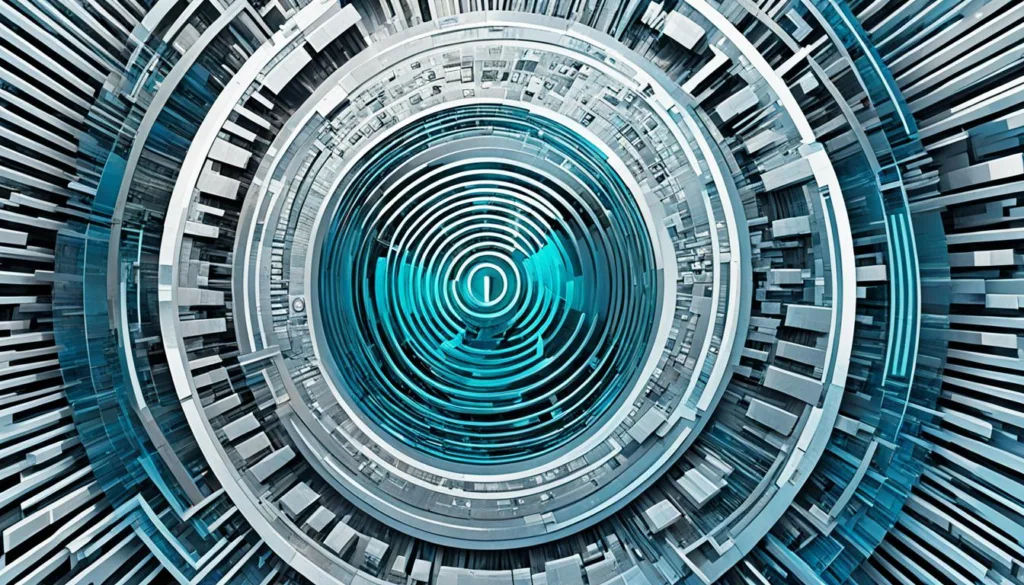
The rise of AI-generated art has brought forth a myriad of legal and ethical considerations. As the field continues to evolve, it is crucial to examine the legal implications surrounding AI-generated art, particularly in the areas of copyright and intellectual property.
Copyright Concerns in the Age of Digital Art Generation
With the advent of AI-generated art, questions surrounding copyright ownership and infringement have become increasingly complex. The unique nature of AI-generated artworks, created through a combination of algorithms and data, challenges traditional notions of authorship and raises important legal considerations.
AI-generated art often employs existing artwork, data sets, or styles as a basis for creation. This raises questions about the originality and derivative nature of AI-generated works. Artists, creators, and consumers need to understand the legal boundaries and potential infringement risks associated with AI-generated art.
The use of copyrighted material in AI-generated artworks presents challenges in determining the rights and permissions required for their creation and distribution. It is essential for artists and AI art platforms to navigate these copyright concerns responsibly and ensure they comply with established laws and regulations.
The emergence of AI-generated art raises thought-provoking questions about artist rights in an AI-driven art landscape. As AI algorithms and models become more advanced, they may possess the ability to create works that closely emulate a particular artist’s style or technique.
This poses challenges in distinguishing AI-generated art from the original works created by human artists. The ethical considerations surrounding the proper recognition, attribution, and compensation of artists in the context of AI-generated art are complex and require careful exploration.
It is essential for artists and organizations involved in AI-generated art to establish clear guidelines and frameworks to protect the rights of artists. This may involve developing new licensing agreements, attribution standards, and frameworks for ensuring fair compensation in the creation and use of AI-generated artworks.
By navigating these legal and ethical considerations, the field of AI-generated art can continue to flourish while respecting the rights of artists and ensuring a sustainable and responsible creative ecosystem.
An Overview of Iconic AI-Generated Artworks
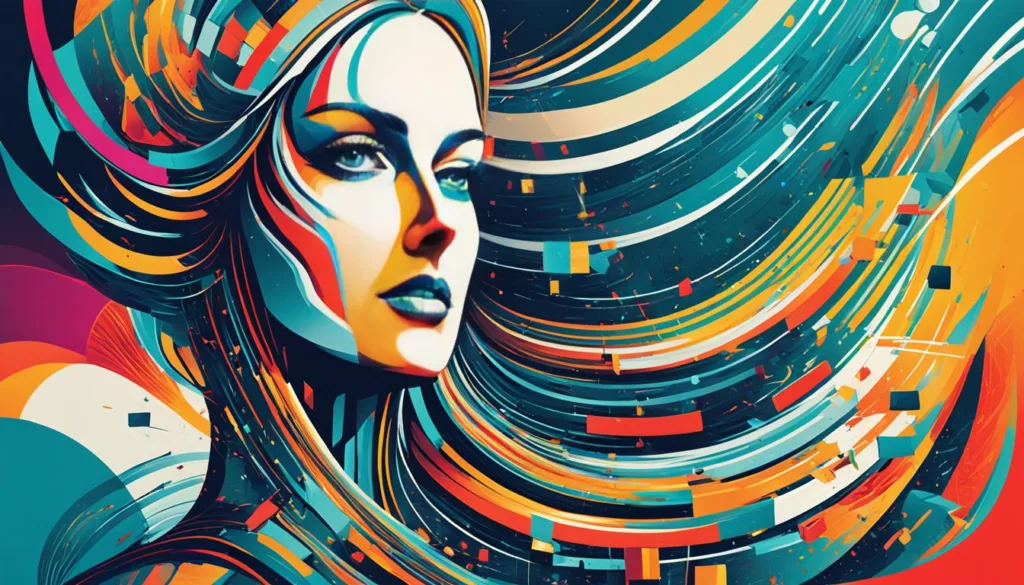
AI-generated art has made a profound impact on the art world, producing several iconic works that push the boundaries of human creativity. In this section, we will provide an overview of some of the most notable AI-generated artworks that have captivated audiences worldwide. These groundbreaking pieces of art serve as testaments to the incredible potential of artificial intelligence in creating visually stunning and thought-provoking artworks.
The Belamy Portrait Auction: Triggering the AI Art Revolution
One of the most significant milestones in the AI-generated art movement is the Belamy Portrait Auction. The auction, held in 2018, showcased a portrait titled “Portrait of Edmond de Belamy” created entirely by an artificial intelligence algorithm. The artwork, a captivating blend of traditional style and AI innovation, stunned the art community by selling for a whopping $432,500. This groundbreaking auction not only put AI-generated art in the spotlight but also triggered a revolution in the understanding and recognition of AI as a legitimate creative tool.
AI Art Competitions and Marketplaces: Celebrating Machine Creativity
AI art competitions and marketplaces have emerged as platforms that celebrate machine creativity and provide opportunities for AI artists to showcase their work. These competitions bring together talented AI artists from around the world, allowing them to compete and showcase the remarkable results of their algorithms and models. AI art marketplaces, on the other hand, provide a space for artists to sell and promote their AI-generated artworks, allowing collectors and enthusiasts to own unique pieces of machine-generated art. These platforms not only foster the growth of AI-generated art but also contribute to the recognition and appreciation of AI as a legitimate form of artistic expression.
Conclusion
In conclusion, the world of AI-generated art is an exciting and ever-evolving field that showcases the remarkable potential of artificial intelligence in creative endeavors. Through the advent of AI art generators like DALL-E and Midjourney, artists and enthusiasts now have powerful tools at their disposal to explore new dimensions of artistic expression.
However, as the field progresses, it is essential to address the legal, ethical, and artistic considerations that arise. Copyright concerns in the age of digital art generation pose a challenge in defining ownership and protecting artists’ rights. Furthermore, the ongoing debate over the role of AI in the future of artistic creation sparks discussions about the nature of human creativity and the extent to which AI can assist or replace traditional artistic processes.
As we move forward, it will be intriguing to witness how AI technology continues to push the boundaries of art and what impact it will have on the art world. The potential for AI to create stunning visuals, interpret complex prompts, and generate unique art pieces is unparalleled. We must navigate this exciting territory while keeping a keen eye on the legal and ethical implications to ensure a fair and sustainable future for AI-generated art.